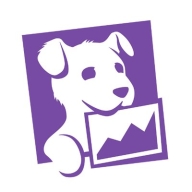

Datadog and Apache SkyWalking compete in monitoring and observability. Datadog generally has an advantage due to its ease of use and advanced features, while Apache SkyWalking stands out for its open-source model and cost benefits.
Features: Datadog provides comprehensive cloud infrastructure monitoring, real-time log analysis, and extensive integration capabilities. Apache SkyWalking focuses on distributed tracing, performance monitoring, and application observability. Datadog's seamless integrations and analytics are highlighted, whereas Apache SkyWalking's robust tracing and flexibility are attractive.
Ease of Deployment and Customer Service: Datadog is noted for its simple deployment, excellent documentation, and dependable support. Apache SkyWalking allows for more customization but can be complex to set up. While Datadog offers a user-friendly model, Apache SkyWalking grants more control and customization opportunities.
Pricing and ROI: Datadog's subscription-based pricing supports scalable solutions that can deliver significant ROI for complex monitoring. Apache SkyWalking, being open-source, has minimal setup costs, ideal for cost-effective solutions. Datadog's pricing is aligned with its features and deployment ease, while Apache SkyWalking's low setup costs are appealing for those on a budget.
| Product | Market Share (%) |
|---|---|
| Datadog | 6.0% |
| Apache SkyWalking | 0.7% |
| Other | 93.3% |

| Company Size | Count |
|---|---|
| Small Business | 80 |
| Midsize Enterprise | 46 |
| Large Enterprise | 98 |
Apache SkyWalking is a versatile open-source tool used for monitoring and analyzing the performance and behavior of applications in distributed systems. It enables tracking requests, identifying bottlenecks, and troubleshooting issues in real-time, while also monitoring microservices, logs, and server metrics.
With its comprehensive monitoring capabilities, flexible architecture, and powerful visualization tools, Apache SkyWalking provides actionable insights and enhances overall application performance.
Its user-friendly interface and intuitive dashboards make it easy to understand and analyze complex data sets.
Datadog integrates extensive monitoring solutions with features like customizable dashboards and real-time alerting, supporting efficient system management. Its seamless integration capabilities with tools like AWS and Slack make it a critical part of cloud infrastructure monitoring.
Datadog offers centralized logging and monitoring, making troubleshooting fast and efficient. It facilitates performance tracking in cloud environments such as AWS and Azure, utilizing tools like EC2 and APM for service management. Custom metrics and alerts improve the ability to respond to issues swiftly, while real-time tools enhance system responsiveness. However, users express the need for improved query performance, a more intuitive UI, and increased integration capabilities. Concerns about the pricing model's complexity have led to calls for greater transparency and control, and additional advanced customization options are sought. Datadog's implementation requires attention to these aspects, with enhanced documentation and onboarding recommended to reduce the learning curve.
What are Datadog's Key Features?In industries like finance and technology, Datadog is implemented for its monitoring capabilities across cloud architectures. Its ability to aggregate logs and provide a unified view enhances reliability in environments demanding high performance. By leveraging real-time insights and integration with platforms like AWS and Azure, organizations in these sectors efficiently manage their cloud infrastructures, ensuring optimal performance and proactive issue resolution.
We monitor all Application Performance Monitoring (APM) and Observability reviews to prevent fraudulent reviews and keep review quality high. We do not post reviews by company employees or direct competitors. We validate each review for authenticity via cross-reference with LinkedIn, and personal follow-up with the reviewer when necessary.